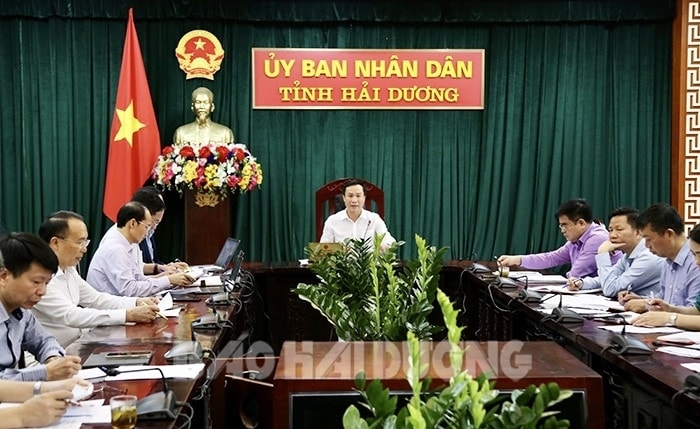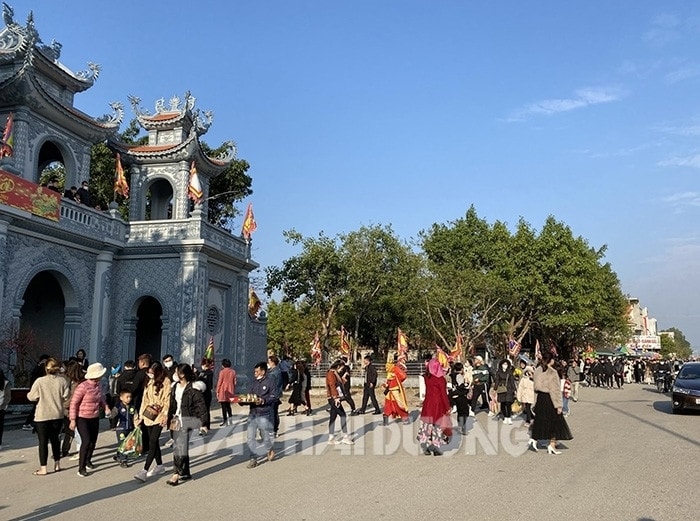The temple was classified as a national artistic structure in 2009.

Chairman of the provincial People's Committee Trieu The Hung asks departments, branches, and localities to closely coordinate in compiling a dossier on Tranh temple for special national relic recognition
Hai Duong provincial authorities on March 22 agreed to make a dossier on Tranh temple in Dong Tam commune, Ninh Giang district for special national relic recognition.
Tranh, also known as Quan Lon Tuan Tranh (Great Mandarin Tuan Tranh), is an old temple located near Tranh wharf.
Legend has it that a small temple was built at the confluence of Tranh and Luoc rivers in the Tran dynasty to worship a god who ruled the river section.
The riverside temple, named Tranh Giang Dai Vuong (Lord of the Giang River), was often affected by tides and eddies.
It was relocated to Tranh Xuyen village in 1935 because of frequent erosion of riverbanks.
Based on inscriptions at the temple, the temple was restored on a large scale in the 5th Tu Duc year (1852), with elaborate and sophisticated carvings and a statue of Great Mandarin Tuan Tranh.
French colonials occupied Hai Duong and Ninh Giang in 1887 and used some structures in Do Giang (now in Ninh Giang district town) to station troops, including Tranh temple.

Tranh temple is a national relic with special historical, cultural, religious, and architectural values
People later rebuilt Tranh temple in the center of Ninh Giang district town from donations of Dao Lang in Van Hoi commune.
It had 127 compartments, covering an area of 14,400 m2.
When the resistance war against the French colonials broke out in 1946, the temple was nearly demolished following the scorched-earth policy, with only three compartments left.
Tranh temple was restored in 1954 to meet people’s need for religious practices.
Locals and Brigade 513 (Military Zone 3) relocated the temple to the present location in 1966 due to barracks expansion.
The Ministry of Culture, Sports, and Tourism classified Tranh temple as a national artistic structure on March 25, 2009.
A spring festival and an autumn incense offering ceremony are held every year at the temple.
Dien xuong hau thanh (trance performance) and hat van (spiritual singing), the intangible cultural heritage recognized by UNESCO, have become special cultural features of Tranh temple festival.
TIEN HUY